Top Historical Places in Lisbon
-
 The history of the Belém Palace dates back to the 16th century when land was purchased by King Manuel I and is now where the palace is situated. Set high up on a gently sloped hill, the palace is the official residence of the President of Portugal since 1910. The Presidency Museum is a part of the palace and exists with the main aim of recounting Portuguese Republic’s history along...Read more
The history of the Belém Palace dates back to the 16th century when land was purchased by King Manuel I and is now where the palace is situated. Set high up on a gently sloped hill, the palace is the official residence of the President of Portugal since 1910. The Presidency Museum is a part of the palace and exists with the main aim of recounting Portuguese Republic’s history along...Read more -
National Pantheon Lisbon
(81 Votes) The National Pantheon of Santa Engracia is a popular 17th-century monument in Lisbon. Even though it was established as a church in the 1560s, it was converted into the National Pantheon in the 20th century. The construction of the church that we see today started around 1682 and was stretched until 1712. But, it was never completed due to different reasons. The incomplete structure stood for c...Read more
The National Pantheon of Santa Engracia is a popular 17th-century monument in Lisbon. Even though it was established as a church in the 1560s, it was converted into the National Pantheon in the 20th century. The construction of the church that we see today started around 1682 and was stretched until 1712. But, it was never completed due to different reasons. The incomplete structure stood for c...Read more -
Almourol Castle
(379 Votes)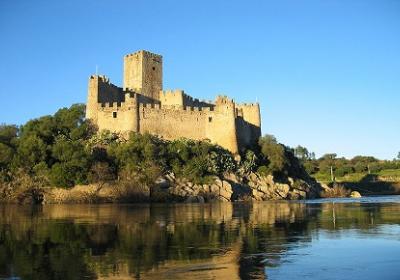 Located by the shores of the Tagus River, the Almourol Castle is a lovely medieval castle, built atop a granite outcrop that rises 18 meters above the water. Just a few minutes’ drive away from Lisbon, the castle sits over the Almoural Island, in the middle of the river. The castle has witnessed many historical episodes and was used as a stronghold during the Portuguese Reconquista. It wa...Read more
Located by the shores of the Tagus River, the Almourol Castle is a lovely medieval castle, built atop a granite outcrop that rises 18 meters above the water. Just a few minutes’ drive away from Lisbon, the castle sits over the Almoural Island, in the middle of the river. The castle has witnessed many historical episodes and was used as a stronghold during the Portuguese Reconquista. It wa...Read more -
National Sanctuary Of Christ The King
(586 Votes)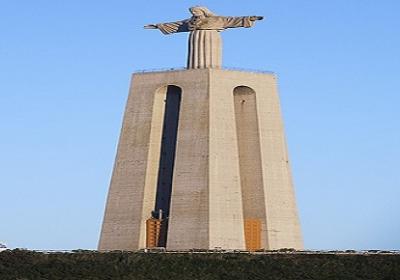 The National Sanctuary of Christ the King is an iconic statue that has been inspired by the Christ the Redeemer statue of Rio de Janeiro. The Catholic monument and shrine were inaugurated in May 1969. Standing tall above the southern banks of the Tejo Estuary, overlooking the city of Lisbon, this monument is dedicated to the Sacred Heart of Jesus Christ. The viewing platform here is the highlig...Read more
The National Sanctuary of Christ the King is an iconic statue that has been inspired by the Christ the Redeemer statue of Rio de Janeiro. The Catholic monument and shrine were inaugurated in May 1969. Standing tall above the southern banks of the Tejo Estuary, overlooking the city of Lisbon, this monument is dedicated to the Sacred Heart of Jesus Christ. The viewing platform here is the highlig...Read more -
Mafra National Palace
(306 Votes) The construction of Mafra National palace was started in 1717 under King John V of Portugal and was completed in 1755. The designated UNESCO World Heritage Site is a palace-monastery, also known as Palace-Convent of Mafra and the Royal Building of Mafra. The palace-monastery monument exhibits Baroque and Neoclassical style of architecture. Visit this site and you will find a royal palace, a bas...Read more
The construction of Mafra National palace was started in 1717 under King John V of Portugal and was completed in 1755. The designated UNESCO World Heritage Site is a palace-monastery, also known as Palace-Convent of Mafra and the Royal Building of Mafra. The palace-monastery monument exhibits Baroque and Neoclassical style of architecture. Visit this site and you will find a royal palace, a bas...Read more -
Lisbon Baixa
(28 Votes) Lisbon Baixa is one of the central districts in Lisbon. An architectural beauty that rose from a tragic past, this is how Lisbon Baixa is often described. This was a simple area in the past, but after it suffered huge damage during the 1755 Lisbon earthquake, it was rebuilt completely. Today, it is dotted with some of the finest neoclassical buildings and is known for a bustling kilometer-long ...Read more
Lisbon Baixa is one of the central districts in Lisbon. An architectural beauty that rose from a tragic past, this is how Lisbon Baixa is often described. This was a simple area in the past, but after it suffered huge damage during the 1755 Lisbon earthquake, it was rebuilt completely. Today, it is dotted with some of the finest neoclassical buildings and is known for a bustling kilometer-long ...Read more -
Nucleo Museologico Do Millenium Bcp
(7 Votes)One of the hidden wonders in the city of Lisbon is the archaeological museum in the basement of the Millennium BCP Bank in Lisbon, the Nucleo Museologico do Millennium BCP. Discovered in the early half of the 1900s, the Museum is a treat for those who want to learn more about the history of Lisbon. The Museum has exhibits and artifacts that date back to more than 2500 years and offer an insight...Read more -
 Palacio das Necessidades or Necessidades Palace is one of the more stunning examples of Baroque architecture in Lisbon, Portugal. A historic building that was originally constructed in the 18th century and has served as a convent as well as a home to the Portuguese royalty before being established as the office of the Ministry of Foreign Affairs of Portugal. Limited parts of the Palac...Read more
Palacio das Necessidades or Necessidades Palace is one of the more stunning examples of Baroque architecture in Lisbon, Portugal. A historic building that was originally constructed in the 18th century and has served as a convent as well as a home to the Portuguese royalty before being established as the office of the Ministry of Foreign Affairs of Portugal. Limited parts of the Palac...Read more -
Duque Da Terceira Statue
(5 Votes) The Duque da Terceira Statue is a bronze monument that has been dedicated to a significant character who had an important role to play in the wars of the early 19th century. The statue dominates the square and was actually a Military man who served as a Commander-in-Chief of the Portuguese army. At night, when the lights are all lit up, the square appears exceptionally beautiful. While you are ...Read more
The Duque da Terceira Statue is a bronze monument that has been dedicated to a significant character who had an important role to play in the wars of the early 19th century. The statue dominates the square and was actually a Military man who served as a Commander-in-Chief of the Portuguese army. At night, when the lights are all lit up, the square appears exceptionally beautiful. While you are ...Read more -
 Campo Pequeno Bullring is a century-old building in Lisbon that has been converted into a multi-event venue. The bullring here was built in the early 1890s and was inspired by Madrid’s old bullring. Today, after its 2006’s extensive renovation, it has been transformed into a modern venue where seasonal bullfights are arranged along with live band performances. You will also find a c...Read more
Campo Pequeno Bullring is a century-old building in Lisbon that has been converted into a multi-event venue. The bullring here was built in the early 1890s and was inspired by Madrid’s old bullring. Today, after its 2006’s extensive renovation, it has been transformed into a modern venue where seasonal bullfights are arranged along with live band performances. You will also find a c...Read more -
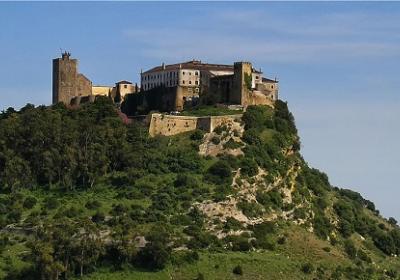 Perched on the top of a hill, the Palmela Castle is around 30-45 minutes away from Lisbon. Located between the estuaries of the River Tagus and Sado River, it is a part of the village Costa Azul in Arrábida Natural Park. Offering spectacular views from the top, it is totally worth visiting this castle to step back in time. Classified as a National Monument, the Palmela Castle is also the...Read more
Perched on the top of a hill, the Palmela Castle is around 30-45 minutes away from Lisbon. Located between the estuaries of the River Tagus and Sado River, it is a part of the village Costa Azul in Arrábida Natural Park. Offering spectacular views from the top, it is totally worth visiting this castle to step back in time. Classified as a National Monument, the Palmela Castle is also the...Read more -
Arco Da Rua Augusta
(1024 Votes) Facing the Praca de Comercio, the arch was first built in 1775, to commemorate the city’s rise from the 1755 Earthquake’s ashes. The monument you see today was finished in 1873. It is a magnificent work in stone. The top of the cornice reaches over 100 feet into the sky; there, the colossal statues of Glory, Valor, Genius and Jupiter rest. There are also four statues over the colum...Read more
Facing the Praca de Comercio, the arch was first built in 1775, to commemorate the city’s rise from the 1755 Earthquake’s ashes. The monument you see today was finished in 1873. It is a magnificent work in stone. The top of the cornice reaches over 100 feet into the sky; there, the colossal statues of Glory, Valor, Genius and Jupiter rest. There are also four statues over the colum...Read more -
Museu Do Combatente
(42 Votes)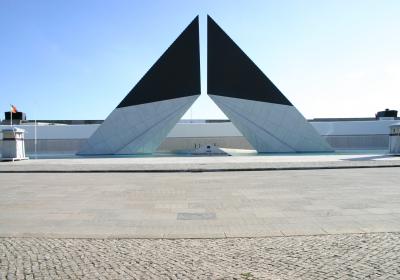 Nationalist sentiments in Portugal’s African colonies in Angola, Guinea and Mozambique led to the Overseas Wars between 1961 and 1974, resulting in a military coup. This museum and monument was established in the memory of the soldiers who gave their lives for that war. The museum has both indoor and outdoor exhibition spaces, for a total of five, covering arms, armoury, aviation history ...Read more
Nationalist sentiments in Portugal’s African colonies in Angola, Guinea and Mozambique led to the Overseas Wars between 1961 and 1974, resulting in a military coup. This museum and monument was established in the memory of the soldiers who gave their lives for that war. The museum has both indoor and outdoor exhibition spaces, for a total of five, covering arms, armoury, aviation history ...Read more -
Campo Pequeno
(109 Votes)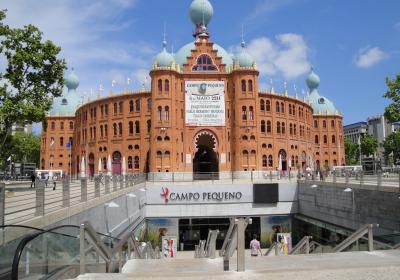 The 1982 historical bullring was renovated and reopened to great success in the 2006. Historically used only for bull-fighting, the arena is now an important performance and event venue. Look up the tickets online for concerts, musicals, theatre, and exhibitions. Under the bullring is an underground shopping complex, eateries, cinema and supermarket.
The 1982 historical bullring was renovated and reopened to great success in the 2006. Historically used only for bull-fighting, the arena is now an important performance and event venue. Look up the tickets online for concerts, musicals, theatre, and exhibitions. Under the bullring is an underground shopping complex, eateries, cinema and supermarket. -
Museu Do Teatro Romano
(33 Votes)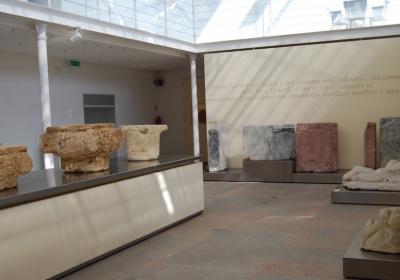 Built in the first century BC by Emperor Augustus and later expanded, the theatre had a seating capacity for 5000 people. Sometime in the middle ages, it was abandoned and buried underground, remaining hidden for centuries thereafter, until the 1755 Earthquake uncovered it. There’s not much left to the theatre now – some columns, the proscenium, the orchestra pit, and other decorati...Read more
Built in the first century BC by Emperor Augustus and later expanded, the theatre had a seating capacity for 5000 people. Sometime in the middle ages, it was abandoned and buried underground, remaining hidden for centuries thereafter, until the 1755 Earthquake uncovered it. There’s not much left to the theatre now – some columns, the proscenium, the orchestra pit, and other decorati...Read more